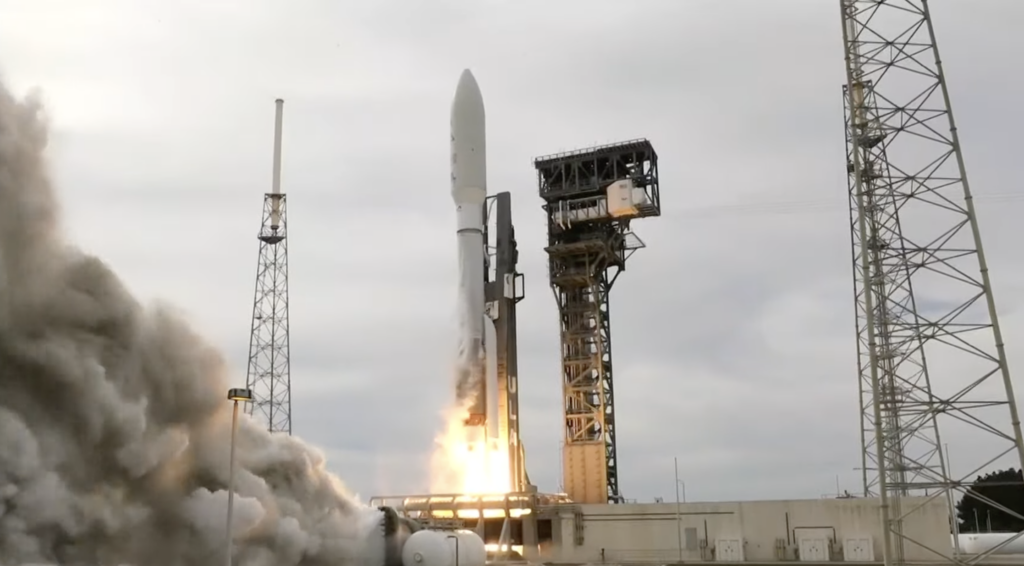The Northrop Grumman-made satellites, named GSSAP-5 and GSSAP-6, are part of the Geosynchronous Space Situational Awareness Program
WASHINGTON — In its first mission of 2022, a United Launch Alliance Atlas 5 rocket on Jan. 21 launched a pair of space-monitoring satellites for the U.S. Space Force.
The rocket lifted off at 2:00 p.m. Eastern from Space Launch Complex-41 at Cape Canaveral Space Force Station, Florida.
The mission, called USSF-8, launched to an orbit approximately 22,000 miles above the equator.
The satellites, named GSSAP-5 and GSSAP-6, are part of the Geosynchronous Space Situational Awareness Program (GSSAP). These are the fifth and sixth satellites of the GSSAP program built by Northrop Grumman.
USSF-8 marked the 91st launch of the Atlas 5 rocket. ULA said this was the first and only planned flight of the Atlas 5 in the 511 configuration with a single solid rocket booster and a 5-meter diameter fairing. ULA CEO Tory Bruno said on a webcast that this asymmetric configuration was chosen in order to provide “just the right amount of energy” for this particular mission.
About two minutes into flight, the GEM-63 solid rocket booster was jettisoned. The payload fairing separated from the rocket about three and a half minutes after launch. A minute later, the RD-180 engine on Atlas’ first stage shut down, and the Centaur upper stage carrying the USSF-8 payload separated. The first engine burn of the Centaur upper stage was confirmed 13 minutes into flight, the first of three engine burns over a more than seven-hour flight to inject the satellites directly into geosynchronous orbit. Separation of GSSAP-5 is expected six hours and 35 minutes after launch, followed by the GSSAP-6 release about 10 minutes later.
Chief of Space Operations Gen. John “Jay” Raymond called USSF-8 a “really important mission” because the GSSAP satellites are used to monitor objects in the geostationary belt. “The way I would describe it is as a neighborhood watch capability that allows us to better understand what’s going on in the domain especially in a really critical orbit like the GEO orbit,” said Raymond.
The first two pairs of GSSAP satellites were launched in 2014 and 2016 on ULA Delta 4 medium rockets. ”These next two satellites will add to that capability and enable us to understand more completely things that occur in the geosynchronous orbit. It’s a key piece in the puzzle for space domain awareness,” said Lt. Gen. Stephen Whiting, commander of the Space Force’s Space Operations Command.
